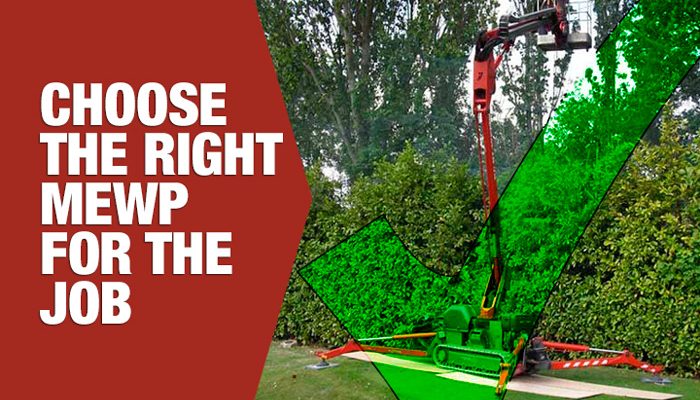
Finding A MEWP For The Job
8 October 2017
Selecting equipment for work at height
Powered access platforms offer a safe and speedy solution to reach most jobs at height but with a wide variety of machinery specifications, it is important to be mindful of a few things whilst finding a MEWP for the job.
Different types of access equipment have been specially designed for jobs in certain environments, for example, spider lifts can be used on fragile floors and in confined spaces whilst road/rail access platforms have a dual functionality to run on the road and train tracks. Getting it wrong can not only slow a job down, costing time and money, but could increase the health and safety risks to the workforce and public as well.
What to consider at the MEWP site
A site visit to the job location is essential to determine which high access equipment to use.
Consider the following things:
• Are there any steep slopes?
• What are the ground conditions like?
• Are there obstructions such as steelwork, overhangs or power lines?
• Look for fragile surfaces such as tiled floors or pathways
• What space is there to load at floor level?
• How high up is the job?
• Are there height and width restrictions?
Other considerations whilst finding a MEWP:
Mobility
Access platforms are flexible and can lift people and equipment to the necessary height in less time that it takes to climb a ladder or scaffold and winch up the necessary tools. Mobile access equipment which is mounted on a vehicle or truck is ideal for multiple jobs in one location.
Access
Often powered access platforms can access jobs which are hard to reach or dangerous with traditional scaffolding or ladders. Boom lifts have a telescopic reach which can avoid obstacles such as architecture or overhanging branches. Spider lifts are designed for use in confined spaces, including jobs indoors, and can pass through a standard sized doorway.
Safety
Consider the potential for falls and whether you need any additional safety equipment such as guardrails, nets or safety harnesses. Make sure the people operating the access equipment are fully trained to do so.
If you are still unsure about the best powered access platform to use for your job then ask for advice at the place where you plan to rent or buy from.
Summary
Whatever machine you select, it is important to familiarise yourself with the specific make and model. Choosing the right access equipment will make a big difference to the speed and safety of your job.
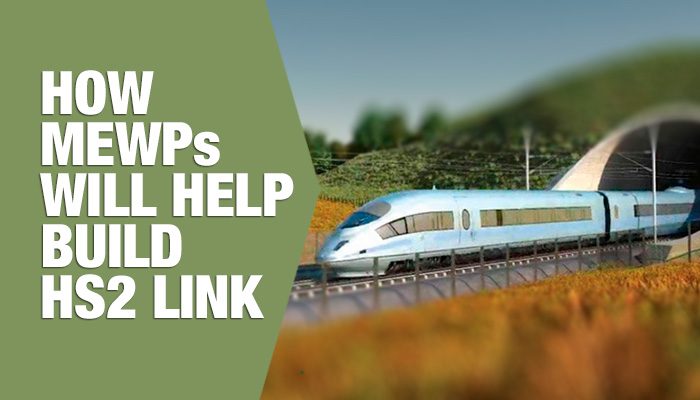
Construction Of The HS2 Rail Project
24 September 2017
How Road Rail MEWPs Will Help Construction Of The HS2 Rail Project
After being given Royal Assent, work has begun on the government’s HS2 rail project across the UK and powered access platforms will be pivotal in both the construction and maintenance of the new line. Contracts worth £6.6 billion have already been placed for the building of the first phase.
The first phase of the government’s HS2 rail project will be from London to Birmingham and operational trains are expected by 2026. Phases 2a and 2b will follow with services from the West Midlands to Crewe due in 2017 and then from Crewe to Manchester by 2033.
Road Rail access platforms are being used for essential jobs at height on the national railways. Jobs which are especially relevant are:
• Repairing and installing signals and posts
• Structural inspections of bridges, viaducts, stations and embankments
• Clearing verges and embankments of vegetation and debris
• Work on power lines
Jobs that overrun on the railways can be expensive. They have a knock on effect on services and commuters so safe, rapid access to the track is vital. Road rail access platforms are specially adapted to run on the road in addition to the rail infrastructure. This provides a flexible solution so jobs can be reached and completed quickly, and also safely, with minimal impact on the surrounding environment.
Having the ability to operate on road and rail tracks does not reduce the speed or functionality of the equipment. It is easy to switch from one operation mode to the other and it saves money as well as time. This is achieved by reducing the need to hire locomotive plant or attempt access through protected or remote areas of countryside.
The Robust and Efficient EVO/2-400
Newer models are more not only robust but also more efficient than ever before. First supplied to the UK in 2003, the current Basket RR14 EVO/2-400 road rail access platforms supplied by Promax Access are third and fourth rail compliant with more than 30 improved features including
– a 400kg capacity cage;
– easy to use and intuitive control system;
– Unique automatic self-levelling turret -200 cant;
– RIS 1530 issue 5 compliant;
– heavy duty rail gears with automatic disc brakes on all of the rail wheels;
– four wheel drive.
Many locations along the route of the new HS2 high speed rail track are hard to reach. There are limits to the usefulness of trucks and tractors for a number of essential construction and maintenance jobs. A road rail powered access platform is a flexible, cost effective and safe solution that will enable crews to access difficult places and carry out challenging jobs, quickly and safely.
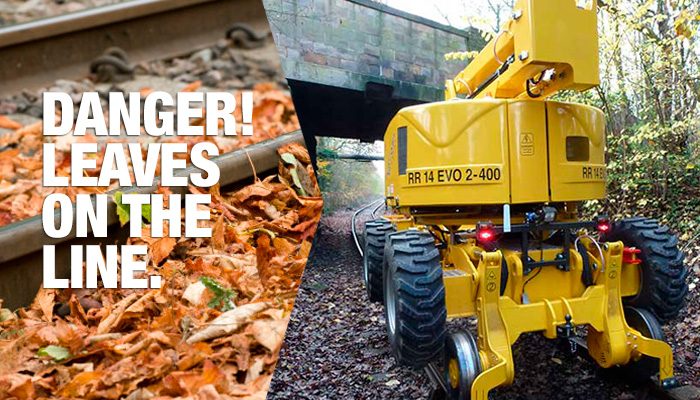
Promax – Minimising Delays With Access Platforms For Railways
17 September 2017
Access Platforms For Railways And Railway Maintenance
It’s the time of year when high winds blow leaves and fallen debris around. This causes serious problems in terms of safety and delays for commuters. Keeping vegetation under control is an essential job on the UK’s rail network and access platforms for railways play a vital role throughout summer and autumn.
Fallen leaves, overgrown grass verges, and overhanging branches are a hazard on the railways. They cause signal and track obstructions which will delay services, inconvenience commuters and pose a risk to health and safety.
Many miles of UK rail lines are in hard to reach rural areas. road and rail access platforms have overcome this problem and operate on both road and railway in urban and rural environments. This saves time and money, making maintenance work significantly safer.
Access Platforms For Railways On The Rail Network
Throughout the year, access platforms for railways are used for a variety of essential track clearance and vegetation management jobs including:
• Clearing verges and embankments of vegetation and debris
• Leaf collection from tracks and tracksides
• Cutting back overhanging trees and branches
• Improving visibility of signs and signals which may be obscured
• On and off track weed killing
• Hazardous tree removal
Benefits Of Access Platforms For Railways
Modern access platforms for railways are safer, stronger, more robust. The flexibility to operate on roads and on railway line means the machines are able to cope with a variety of tasks in a wide range of different locations and environments.
Speed and performance are not limited by the dual functionality of access platforms for railways as they can switch easily between the two operating modes and they have a minimal impact on the countryside and environment.
Benefits include:
• 3rd and 4th Rail Compliant
• 4WD to reach areas that are off-road
• Automatic turret levelling
• Large cage capacity for lifting people and equipment
• Intuitive control system with full pictographic ground controls
• Heavy duty rail gear with auto disc brakes on all rail wheels
Many miles of railways track run through remote rural areas of the UK where, during summer and autumn, trees, leaves and vegetation can pose a risk to safety by causing an obstruction or obscuring vital signals and signs. Accessing some areas and keeping on top of the growth can be a challenge, particularly during late summer and autumn.
Access platforms for railways offer a fit for purpose and safe solution to clearing and maintaining railway lines to ensuring there are no expensive delays and inconvenience to passengers.

Here’s the MEWP Weather Forecast
10 September 2017
How three hurricanes affect your outside access platform
An outside access platform in wet and windy conditions will require extra precautions to avoid accidents. In these weather conditions the risks of instability, falls and over-tipping are increased and the number of accidents rises as people fail to compensate for the adverse conditions. Even all-terrain and off-road access platforms can fall prey to wet weather problems and potential hazards may not be obvious as conditions can change mid-job.
The violent storms and hurricanes hitting the Caribbean and Florida at the moment are a powerful reminder of how devastating nature can be. Although on the other side of the world, the two month forecast for the UK is for the tail end of three hurricanes to arrive with heavy rain and high winds up to 100mph.
What the law says about outside access platform
There are two main pieces of legislation that are relevant for considering safety issues in wet weather conditions:
The Work at Height Regulations 2005 – This requires a detailed risk assessment to be carried out at the job location before starting any work at height. The risk assessment should be reviewed at regular points throughout the job.
The Provision and Use of Work Equipment Regulations 1998 (PUWER) – Managers and employers are obligated to prevent or control the identified risks. The legislation includes a whole section on over-tipping and considering ground conditions in relation to the requirements of the job.
All staff that operate powered access platforms must be properly trained in their use. This training includes identifying potential hazards and avoiding them and handling rescue situations should the need arise.
Things to consider in wet weather
Ground conditions
This is a primary consideration in wet weather as it could be crucial to the stability and safety of the access equipment. Both the stability of the ground under the weight of the machinery and the possibility for changing conditions, for example on sloping ground, should be considered. Spreader plates may be necessary to stabilise boom lifts and heavy access platforms.
Access
As well as the location of the job, the ground conditions to and from the site may pose a risk in heavy rain. The access route can pose a number of hazards including underground dangers, sloping ground or uneven surfaces.
Instability
Sloping ground is a challenging work surface in dry weather and can become dangerous and unstable in the rain as the surface of the ground can wash away on steep hills and gradients.
Overturning accidents on grass verges, and steep bankings beside roads and train lines are more common in wet conditions.
Preventing falls
Falls are the most common cause of serious accidents and injuries involving access equipment. In rainy conditions the basket or work platform may be wet along with the surrounding work area. It may be necessary to take extra care and also use additional safety equipment such as a harness.
Accident prevention
With heavy rain and gusting winds forecast it is important that UK operatives of powered access platform are prepared and confident to use the equipment in wet conditions.
• Make sure all staff are fully trained and familiarised in the use of specific access equipment
• Risk assessments should be carried out before, during and after the job and recorded
• Check ground conditions at the job location and use spreader plates if necessary
• Access route ground conditions also need to be checked to avoid dangers
• Be prepared for changeable ground and surface conditions in persistent heavy rain
• Use additional safety equipment such as harnesses and high visibility waterproofs
Summary
With the UK forecast predicting deluges and powerful gusts over the next few months, it is vital that all those responsible for the safe operation of an outside access platform become their own “weather watchers”. Accuweather provides global forecasts. More locally, The Met Office provides long range forecasts .
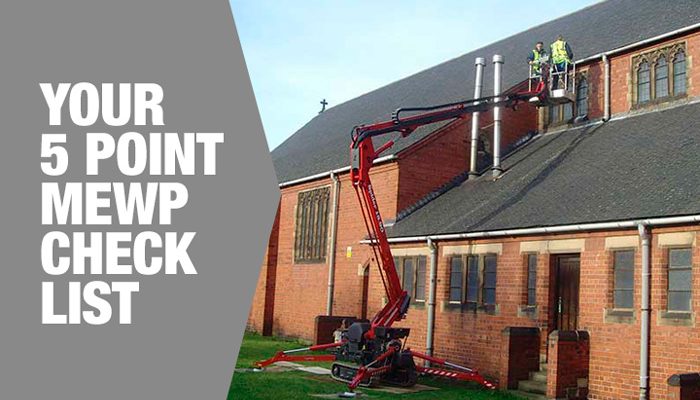
MEWP Checklist
3 September 2017
Important considerations For A MEWP Checklist
If you are considering using a powered access platform for the first time, here’s a five point MEWP checklist to help you get started. Although powered access platforms are safe and easy to operate there are still some important things you need to know about safety and the law.
It doesn’t matter if you are using the access equipment for public or private work, the considerations are the same and being prepared will make any task safer, faster and easier to complete. So here it is our 5 point MEWP checklist.
MEWP Checklist
Tick off this MEWP checklist to understand and consider the implications before you rent, buy or operate any powered access platforms:
1. Training
Under UK law, anyone using access equipment for any purpose must be trained in how to inspect and operate it, and recognising and avoiding any dangers or hazards. They should also be familiar with the specific model of access platform that they are using. It is the responsibility of employers and individual users to make sure they have completed the training to comply with current health and safety legislation. Promax Access can guide you through the maze of Height Safety Training Courses and Legal Obligations.
2. Risk assessment
All operatives need to be aware of potential dangers such as overhead power lines, ground conditions, obstructions and stability issues, so they can avoid any risk to themselves or anyone else around the job site. A detailed record should be kept of the risk assessment including inspections of the equipment and the use of harnesses if necessary. As circumstances can change, the risk assessment should be reviewed throughout the job. More information about Risk Assessments may be found at the Health and Safety Executive website .
3. Choosing equipment
Access platforms are flexible and mobile which makes them suitable for jobs at height in a wide range of locations and environments. Choosing the right equipment is an important consideration and will depend on the requirements of your job:
• Spider lifts have a narrow design, reduced noise and low ground pressure and can be used on more fragile surfaces indoors and outdoors
• Mobile access platforms on a van or truck are ideal for multiples jobs and on or off-site such as street lighting repairs or roofing
• All terrain access platforms are 4WD and can operate on extreme gradients and challenging surfaces
• Road rail access platforms have duel functionality to work effectively on road or rail tracks
Promax Access have been raising the standards in powered access solutions for over 15 years. They can provide help and advice in choosing the right equipment.
4. Ground Conditions
For most outdoor jobs, ground conditions are linked to the weather which is impossible to control. They can vary on different areas of the same site and are changeable – wind, rain, ice and sun can all cause instability – so they need to be monitored throughout the job. Sometimes a geotechnical survey will be required to identify underground hazards such as sewers or services.
Never underestimate the importance of physically checking the on-site ground conditions before deploying any MEWP.
5. Machine maintenance
It’s the law to have access equipment tested and thoroughly examined by a qualified person every six months for machines lifting people and 12 months for those lifting just equipment.
Both new and used access platforms should be fully serviced and maintained to meet current health and safety legislation and ensure jobs are carried out safely and more efficiently.
Without a valid LOLER certificate, you should not use your machine. Promax Access off a free LOLER Reminder service .
Summary
Faster, safer, easy to use – there are lots of benefits to choosing powered access platforms over ladders or scaffolding for most elevated jobs but the benefits will only really be gained by ensuring they are properly used. Get properly trained, choose your equipment wisely and be aware of the potential problems that can hold up a job and powered access platforms can save time and money on jobs of all sizes.
Get free advice. Call Promax Access on 01226 7166657 and talk to an expert.
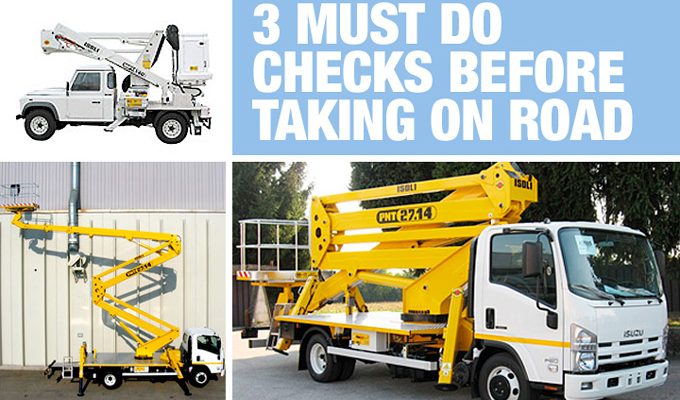
Three “must do” checks before taking MEWPS on the road
27 August 2017
Be aware of these regulations for MEWPs on the road
Vehicle and truck mounted access platforms are ideal for a wide range of jobs on and offsite and are able to move between jobs quickly and safely.
However, there are a few regulations to be aware of before taking MEWPs on the road. Make sure they are
First: road worthy,
Second: licensed and
Third: loaded safely to minimise the risk of over-tipping or subsidence.
There are two types of mobile access platforms
Vehicle mounted access equipment falls into two categories for vehicle excise duty and road regulations:
1. Up to 3500 kg Revenue Weight which are classed as light good vehicles
2. Over 3500 kg Revenue Weight which are classed as tower wagons
Light goods access platforms
• They can be driven on a Category B licence which is a standard car licence
• An annual MOT test is required once the powered access platform is over three years old and most vehicle mounted platforms may be too big for a standard testing centre but can be taken to an HGV vehicle testing centre instead
• Vehicles weighing between 300kg and 3500kg need a special class VII MOT test which are only available at HGV test centres and a limited number of standard ones
Tower wagon access platforms
• A category C1 drivers licence is required for platforms sized between 3.5 and 7.5 tonnes. Drivers who passed their car test before 1 January 1997 automatically have this entitlement but anyone who passed after this date needs to take a separate test to drive a vehicle over 3.5 tonnes
• Drivers of tower wagons over 7.5 tonnes must hold a large good vehicle licence
• Truck mounted access platforms are exempt from the Goods Vehicles (Plating and Testing) Regulations 1988 and the Goods Vehicles (Licensing of Operators) Regulations 1995, provided they are only used to transport the access platform
• Tower wagons must be roadworthy with a defect reporting system in place that includes records of all maintenance and servicing
SAFETY – Maintaining a safe weight
All mobile access platforms are subject to a Maximum Allowable Mass (MAM) which is the maximum weight that the vehicle that can be used on the road and includes the top weight that it can carry safely.
The MAM can usually be found on the vehicle, such as inside the driver’s door, or in the model operations manual. It is important that anyone using the access equipment is aware of the MAM as over loading the vehicle will have serious implications for stability and may lead to dangerous accidents. MAM is explained in more detail on the Government website.
Summary
It is always advisable to makes sure a powered access platform is safe to use and fit for purpose and for vehicle mounted access equipment, this also means making them road legal. Make sure you are aware what type of mobile access platform you are working with and the relevant road regulations and MAM limitations and, when used correctly, they can save time and money on a range of jobs at height by moving safely and swiftly between locations.
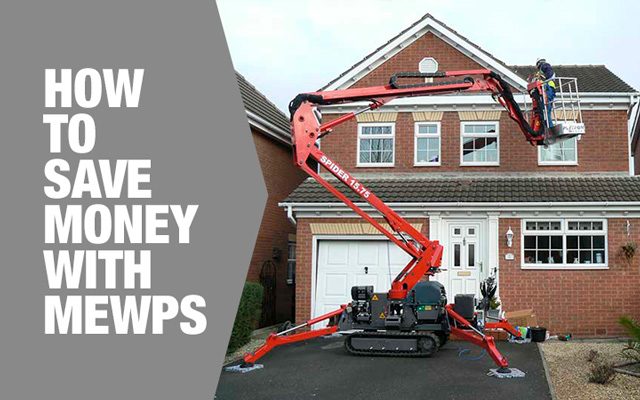
Your MEWP – make it work for you and save money
20 August 2017
Five easy ways your MEWP can work for you
Powered access platforms are flexible and ideal for a range of different jobs at height. They can save money for businesses of all sizes, whether they are used frequently or on a job-by- job basis.
Five ways that your MEWP could save your business money:
1) Buy or rent
Larger companies with multiple jobs at height can save on the rental costs by investing in their own equipment. With the extra advantage of being able to brand up their plant and train multiple operatives to use it, it is well worth considering. Owning your MEWP also allows flexibility in scheduling where and when it can be used across different projects.
Smaller firms can save money by renting access equipment as they go which saves on the initial expense of buying new equipment, on-going storage costs and the maintenance and servicing of a machine that they won’t get regular use out of.
If business improves and rental costs begin to accumulate then it may be time to look at owing your own MEWP. Before jumping in with a large capital outlay, look at the thriving market for second hand and used access platforms which are a cheaper option.
2) Time
Traditional methods for working at height such as scaffolding take time to erect and take down which needs to be priced into a job. There will be circumstances where this is the best option for the job but powered access platforms are the safest and quickest way to lift people and equipment to significant heights.
The access equipment can be brought to site, moved around if necessary and people lifted and lowered in a matter of minutes for a vast range of jobs. The mobility of access platforms also means they can be used for multiple jobs in different locations. More done in less time = saves money.
3) Safety
Falls from height account for most work-related accidents and the use of access platforms has shown significant reductions in the number of falls because:
• People are lifted in a cage and not required to climb
• Equipment is raised the same way and not winched up
• Safety harnesses are used on most jobs as an additional support
• Access platforms have excellent stability even on sharply sloping ground
• Current health and safety legislation means it is compulsory for all operatives to be fully trained in inspecting, operating and using access equipment and identifying potential hazards
4) Flexibility
Powered access platforms include a wide range of machines that have specialist features for different jobs and a variety of lift and outreach distances. Some machines such as boom lifts have the ability to reach over and around obstacles and others are able to operate off road and on all terrains.
If narrow doorway access is required, there are compact MEWPs available.
Selecting the correct equipment will save money by eliminating many of the potential problems and delays caused by using machines that are too heavy, inflexible or not fit for purpose.
5) Access
Access is essential to the success of many jobs at height and powered access platforms offer a solution to most working problems. For example, machines such as tracked access spider lifts can be used indoors or outdoors and are lightweight and adaptable for fragile ground surfaces. There are also duel function access platforms which can be driven on the road and on railway lines to reach difficult parts of the track. All-terrain vehicles that are four wheel drive and durable for use on ice, mud and sand are also available.
Summary
Often the cost of a job comes down to how quickly and safely it can be completed and how to cause the minimum disruption. Whatever the size of your business or the nature of your work, if you have to carry out jobs at height then powered access platforms can save you money. They are safe, easy to operate and fully mobile and flexible for a wide range of jobs and locations.

Essential Ground Condition Checks for MEWPs
13 August 2017
Ground condition checks for MEWPs
It may be sunny this morning but was there heavy rain last night and the night before that could mean unstable ground conditions?
Ground conditions are essential to the stability of powered access platforms and jobs at height are carried out on a variety of surfaces.
Different types of access equipment are suitable for use on a range of different surfaces, indoors and outdoors. Whether you are using an access platform on wheels or a jack or outrigger, choose the right type for the working surface. The weight of the access equipment could cause ground to shift mid-job which will make the machine unstable and risk falls or over-tipping.
How to perform ground checks for MEWPs
Ground Assessment – A visual inspection may be fine but some sites may need a full geotechnical survey . The assessment should be made by someone with enough knowledge and experience to bring in expert help if necessary.
Be flexible – Ground conditions can vary in different areas of the same site so be prepared to assess each individual location for the access equipment, especially when using mobile access platforms such as booms or scissor lifts.
Weather conditions – Wind, rain, ice and even sun can quickly change ground conditions and cause instability. Regular checks should be carried out, particularly in rainy or cold conditions, and adjustments made if necessary
Spreader plates – Most soils, unmade ground and some paved areas are not capable of supporting the high pressure created at the feet of outriggers.
Spreader plates should always be used with boom-type mobile elevating work platforms (MEWPs) when fully supported on their outriggers.
Spreader plates should be used with all other MEWPs that have outriggers unless a risk assessment indicates they are not necessary. Spread the Load!
Surfaces and different powered access
Tracked access platforms and scissor lifts are a reliable option for these surfaces:
• Streets, paths and gardens – Paved areas might look strong but could have been laid on weak ground or have shallow services underneath.
• Indoors – Many floors, cellars and basements are incapable of bearing the weight of access equipment so care must be taken when siting equipment indoors for a job.
All-terrain access platforms are best for any off-road work or surfaces that require specialist traction or 4WD:
• Sand – Low sand density and high or variable water tables can create difficult conditions on sand.
• Ice and snow – Regular checks should be carried out as frozen ground can quickly become soft as it thaws.
• Rural areas – Many rural areas require an off-road vehicle. Take extra care when working next to rivers, estuaries and flood plains.
Boom lifts or mobile access platforms such as vehicle mounted lifts offer the flexibility and variety of reach to tackle most jobs at height in urban environments:
• Urban streets – Take extra care when siting equipment on estate roads or areas that are used to light traffic rather than those used regularly by heavy commercial vehicles.
• Underground Services – Sewers, drains, manholes, gas and water mains can be close to the surface and may be damaged by the weight of a powered access platform or could even collapse and cause the machine to become unstable or overturn.
Summary
The key to using access equipment on different surfaces is to be flexible and prepared to keep checking the ground conditions in case there is any change. It is better to check and make adjustments than wait for problems to occur, especially as it is easy to adjust the stability settings of most access equipment. Make sure you have the right type of platform for the job and that your checks are carried out properly and regularly so the access equipment will do a safe job on most types of ground surface.
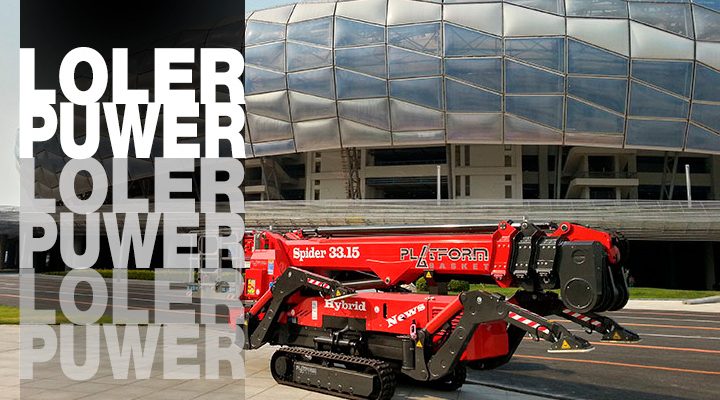
Do you know your MEWP Maintenance
6 August 2017
MEWP Maintenance And Safety Regulations
Powered access platforms are only safe and efficient if they are in premium working condition and regular inspections and MEWP maintenance are required by law for lifting equipment.
Making sure access equipment is stable, safe and fit for purpose is essential to health and safety and means jobs at height are completed faster and more efficiently. Whether it is a new or used access platform, keeping the access equipment in prime working condition extends its performance and lifespan and increases value for money.
There are two pieces of current legislation that govern MEWP maintenance:
• Lifting Operations and Lifting Equipment Regulations 1998 (LOLER)
• Provision and Use of Work Equipment Regulations 1998 (PUWER)
It is a legal requirement to make sure access platforms are tested and thoroughly examined at regular intervals by a qualified person – six months for anything lifting people and 12 months for machines lifting just equipment.
Lifting Operations and Lifting Equipment Regulations 1998 (LOLER)
LOLER has the following requirements for servicing access equipment:
• Equipment used for lifting people should be safe to use and all necessary precautions must be taken to eliminate or reduce any risk
• Access equipment should be thoroughly examined before it is used for the first time
• Examinations should be carried out in use every six months for access platforms lifting people and 12 months for all other equipment
• Inspections and servicing should be carried out by a qualified person who submits a full report to the owner/employer
See the HSE publication “Lifting Operations and Lifting Equipment Regulations 1998. Approved Code of Practice and guidance” for the regulations.
Provision and Use of Work Equipment Regulations 1998 (PUWER)
The servicing requirements of PUWER for work equipment are:
• It should be suitable for use
• It is used and maintained in a safe condition for use so that people’s health and safety is not at risk
• Inspected regularly to ensure that it is safe for use
• A competent person should carry our inspections and a record kept until the next inspection
• Mobile access platforms used for carrying people should be fit for purpose with measures taken to reduce the risks to anyone using it or in the vicinity
The HSE publication “Provision and Use of Work Equipment Regulations 1998. Approved Code of Practice and guidance” is available from their website here.
The Promax Access LOLER Reminder Service
Without a valid LOLER certificate, you should not use your machine. We offer a free LOLER reminder service to save you the problem of remembering your access platform’s (LOLER) examination.
See our LOLER reminder and simply enter the date of your next LOLER examination and we will not only contact you prior to that date, but also issue a LOLER reminder to let you know when it is due.
Summary
Powered access platform maintenance is important to meet regulations and maximise the functionality and safety of the equipment. To comply with LOLER 1998 and PUWER 1998, have access equipment tested and thoroughly examined at regular intervals by a qualified inspector or engineer.
Getting your powered access platforms inspected and serviced regularly is not only a legal requirement but a way to guarantee it is operating at peak performance, getting jobs at height completed faster and more safely and to avoid any unnecessary accidents.
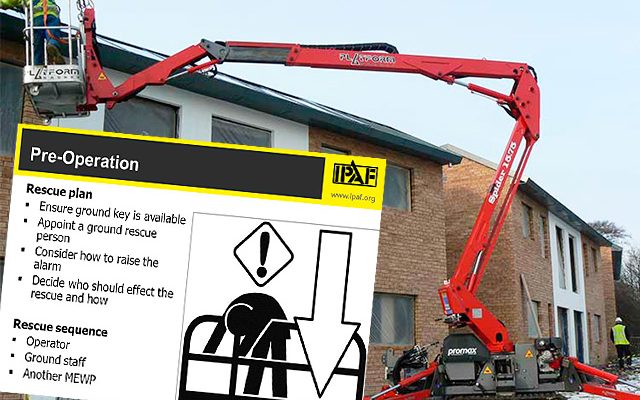
MEWP Rescue Plan
30 July 2017
Be Ready For When Things Go Wrong
Powered access platforms such as spider lifts and compact cranes are the safest way to work at height in most circumstances. However, there are occasions when things can go wrong. The key to a successful MEWP rescue plan starts with a comprehensive Risk Assessment. This includes the following essential information:
• The Manufacturer / model / ID number
• Location of use
• Date, times and duration of the MEWP rescue plan
• Ensure a ground key is available
• Appoint a ground person(s) onsite, familiarised and authorised to lower the work platform in the event of an emergency or a machine malfunction
• Best ways to raise the alarm
• Who should effect the rescue and how
• Name and contact number of authorised service engineer (if needed to call)
• And record Date the Rescue Plan was last practised
Carrying out a detailed and thorough risk assessment of the job location will identify most of the potential hazards before the job starts. But sometimes human error or acts of nature, such as extreme weather conditions, can mean that things still go wrong. It is important to have a rescue plan in place to support and assist the workforce in case of an accident or mechanical failure.
Your MEWP Rescue Plan
Most access equipment has back-up systems built into the machine. This allows the operator to return the raised platform back to ground level. Though these systems rarely fail it can still happen, so it is vital to have a MEWP rescue plan for how people can be brought down safely. Not only is it important to have a plan for rescuing someone from a MEWP, but it just as important to practise it. Someone on the ground should know what to do in an emergency and how to operate the machine’s ground controls.
Any rescue plan from an access platform should comply with the current health and safety legislation covered by the 2005 Work at Height Regulations. It is important to do a risk assessment for the rescue and keep a record of this assessment. More information regarding controlling the risk of MEWP hazards can be found on the Health and Safety Executive website.
Actioning a MEWP Rescue Plan
• Activate all normal emergency lowering procedures if possible
• Contact the manager of the site or project to report any failure of backup emergency systems
• Get the powered access platform checked by a qualified engineer to see if an onsite repair can be carried out
Basket-To-Basket Rescue
If it is not possible to repair the lowering mechanisms then a basket-to-basket rescue may be necessary. This can be complicated and poses additional health and safety risks so it is important to follow the following steps:
• The rescue machine should be placed in the safest position to minimise any additional danger to anyone involved in the rescue
• Place the two machines adjacent to each other with the smallest possible gap between them
• Attach a double lanyard to both the person being rescued and the anchor points on both machines before the rescue takes place
• Never overload the rescue machine as this could lead to over-tipping or delay the rescue operation
• In exceptional circumstances where a basket-to-basket rescue is not feasible, emergency evacuation systems such as a crane rescue could be used.
Summary
Having a MEWP rescue plan is an essential part of planning a job. Though access equipment is safe and efficient, there are rare occasions when jobs don’t go to plan. Carry out a full risk assessment, keep a record of any rescue situation as it happens. Always try the simplest solution first before attempting a more complicated rescue procedure. The best situation is to resolve the problem quickly and carefully. And remember to practice for such an event.